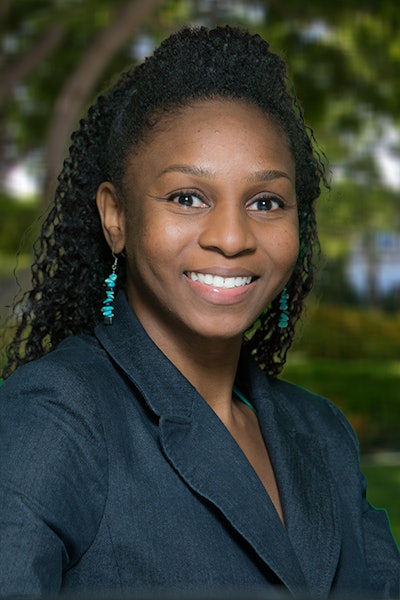Like many others who have not been living in a dark-tinted bubble for the past year, I have noticed that it has become increasingly difficult at times to differentiate between fact and fiction when reading U.S. news headlines.
Millions of people across the nation and the world have been carefully observing the transitions taking place since the onset of the new presidential administration. I continue to be alarmed, almost weekly, by the happenings within the U.S. federal government and how these—sometimes drastic—shifts are influencing the nation’s standing within the global community.
 Dr. Robin Brooks
Dr. Robin BrooksOne matter that has been plaguing the new administration is the question of integrity. Doubts about Trump’s and his team’s trustworthiness developed strongly during his campaign run for the presidency, and the suspicions did not subside once he took office. Perhaps one of the best examples that helped continue that tone of distrust came immediately after Trump’s inauguration in January 2017. During his first public press briefing, the now former White House press secretary Sean Spicer made false statements about the crowd size of the inauguration. White House Counselor Kellyanne Conway, to justify the statements, replied that they were “alternative facts” when NBC’s moderator Chuck Todd asked her about Spicer’s claims.
While my college students have never voiced “alternative facts” as a response to my inquiries about the veracity of their statements, a number of their papers have contained faulty “facts” or erroneous information. This is particularly troubling to me because I teach courses on people of color. A lot is at stake in courses that study marginalized subjects. Haphazard research increases the risk of spreading stereotypes and untruths in an age when the humanity and value of certain lives continue to be contested.
From careful attention and genuine questioning of students over the years, I have been able to identify several reasons students do not utilize the university’s library system and its many services to find credible source materials. I have learned, as a result, how to help students take advantage of valuable university resources.
The root of misinformation in student papers does not necessarily run deep. Students are drawn to the ease and accessibility of doing a quick internet search, something that many of them say was acceptable in their high schools. Even when students get to college, they are not always challenged to sift through questionable internet sources because not all professors require research assignments. A lack of familiarity with the library itself and about how to navigate its search engine, databases, and collections is another reason for faulty student scholarship. In a similar vein, academic sources, including books and lengthy articles filled with unfamiliar language or technical jargon, can be intimidating to students. These are explanations to consider beyond the trite account that students’ carefree or nonchalant (and sometimes lazy) nature hinders them from seriously taking time to search for quality sources.
Below are some ways to help students use and understand the value of the library:
- Explain the importance of finding reliable sources. Some students tend not to understand the dangers of using poor-quality sources filled with unsubstantiated claims. Research skills should be an important part of their education. Analyzing, evaluating, synthesizing and integrating materials into their own writing develops their critical thinking, which is crucial in most careers and essential to being well-rounded people who are not duped by “fake news” or by people claiming that real/accurate news is fake.
- Provide specifics about what makes a source reliable. Students need to understand that the library offers a variety of high quality publications (including digital sources that can be accessed from off campus) written by trained scholars, field experts, specialists, etc. Remind them to properly cite the sources as well.
- Arrange for a library session at the beginning of the semester. Librarians are willing to familiarize students with the library system and help them learn to locate and assess appropriate sources. I have taken classes to the library and I have had librarians come to my classroom to demonstrate using the classroom technology. Identify databases specific the course, so students will know where to go or start their search. Even if professors do not choose to go the librarian route, they can provide the names of relevant databases.
- Create a variety of assignments that require some level of research. A ten-page research paper is not the only type of assignment that can help students hone these skills. Professors can conduct simple in-class search assignments using the library’s website for practice. Writing an annotated bibliography is another useful exercise. If students need further exposure, offer a short pair or group project centered around research. Making sound investigating a regular part of the course can expand students’ knowledge base.
- Deduct points for non-credible, low-quality sources. It is unfortunate that professors have to resort to this measure, but students tend to pay more attention when they know their grade can be affected.
Ultimately, it is irresponsible to leave college without knowing how to vet sources. I feel it is my duty as a professor to at least attempt to fill in the gaps for students who did not learn quality research skills in our K-12 system. It is always useful to have on hand some tips that can assist students and deter them from utilizing alternative facts.
Dr. Robin Brooks is an Assistant Professor at the University of Pittsburgh in the Department of Africana Studies


















